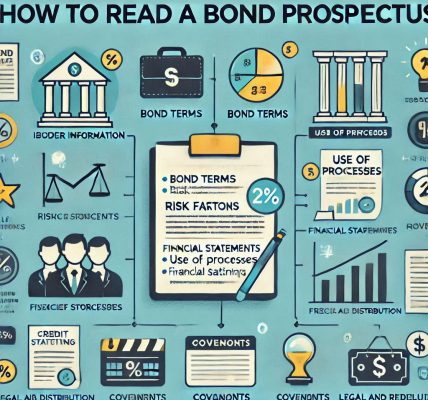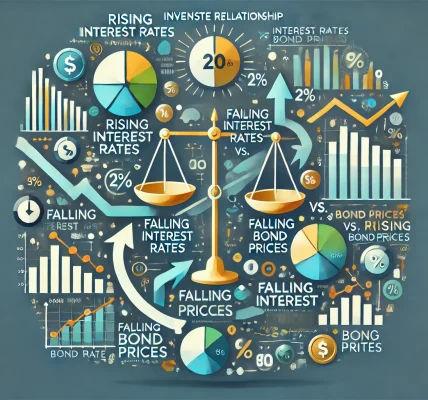Introduction
Investing in bonds is a reliable strategy for income generation and portfolio diversification. However, investors often face a critical decision: should they invest in Bond ETFs or Individual Bonds? Each option has its own advantages and disadvantages, making the choice dependent on an investor’s financial goals, risk tolerance, and investment strategy.
In this comprehensive guide, we’ll break down the pros and cons of Bond ETFs and individual bonds, helping you make an informed investment decision.
Understanding Bond ETFs and Individual Bonds
What Are Individual Bonds?
Individual bonds are debt securities issued by governments, municipalities, or corporations to raise capital. Investors who purchase a bond are effectively lending money to the issuer in exchange for fixed interest payments (coupons) and the return of the principal amount at maturity.
Types of Individual Bonds
- Government Bonds (e.g., U.S. Treasury Bonds, Municipal Bonds)
- Corporate Bonds (Investment-grade and High-yield Bonds)
- Agency Bonds (Issued by government-sponsored enterprises like Fannie Mae)
- Municipal Bonds (Tax-free income from state or local governments)
What Are Bond ETFs?
Bond Exchange-Traded Funds (ETFs) are investment funds that hold a diversified portfolio of bonds. These ETFs trade on stock exchanges just like stocks, offering investors exposure to different types of bonds without having to buy them individually.
Types of Bond ETFs
- Government Bond ETFs (Invests in U.S. Treasury securities)
- Corporate Bond ETFs (Includes bonds from large companies)
- Municipal Bond ETFs (Provides tax-free income)
- High-Yield Bond ETFs (Invests in lower-rated, higher-risk bonds)
- Inflation-Protected Bond ETFs (Holds TIPS – Treasury Inflation-Protected Securities)
Pros and Cons of Individual Bonds vs. Bond ETFs
Pros of Investing in Individual Bonds
✅ Fixed Income & Principal Protection
Investors receive predictable interest payments and the principal amount upon maturity, ensuring capital preservation.
✅ Customization & Control
You can choose the specific bonds based on maturity, credit rating, and issuer, allowing for a tailored portfolio.
✅ Lower Expense Costs
Unlike ETFs, individual bonds do not have management fees or ongoing expense ratios.
✅ Tax Advantages (Municipal Bonds)
Certain government and municipal bonds offer tax-free interest income, making them ideal for high-income investors.
Cons of Investing in Individual Bonds
⚠ Liquidity Issues
Selling individual bonds before maturity can be challenging and may result in losses due to price fluctuations.
⚠ Higher Minimum Investment
Many bonds require a minimum purchase of $1,000 or more, making them less accessible to small investors.
⚠ Diversification Challenges
Building a well-diversified bond portfolio requires purchasing multiple bonds across different sectors, which can be capital-intensive.
Pros of Investing in Bond ETFs
✅ Instant Diversification
Bond ETFs hold a basket of bonds, reducing individual bond risks and exposure to a single issuer.
✅ Higher Liquidity
Bond ETFs trade on stock exchanges, making them easy to buy and sell at market prices throughout the trading day.
✅ Low Minimum Investment
You can invest in a diverse bond portfolio with a single purchase, even with a small amount.
✅ No Maturity Constraints
Unlike individual bonds, Bond ETFs do not mature, allowing continuous reinvestment and yield compounding.
✅ Reinvestment of Interest Payments
Most Bond ETFs automatically reinvest interest payments, which can enhance returns over time.
Cons of Investing in Bond ETFs
⚠ Fluctuating Prices
Since they are traded like stocks, Bond ETFs experience price volatility, which may impact returns.
⚠ Expense Ratios
Investors must pay management fees (expense ratio), which can slightly reduce long-term returns.
⚠ No Fixed Maturity
Unlike individual bonds, Bond ETFs do not offer guaranteed principal repayment, as they do not mature.
Which One Should You Choose?
The decision between Bond ETFs and Individual Bonds depends on your investment goals, risk tolerance, and portfolio strategy.
Choose Individual Bonds If:
📌 You want fixed income and principal protection.
📌 You prefer a customized bond portfolio.
📌 You can hold bonds until maturity.
📌 You seek tax advantages (municipal bonds for tax-free income).
Choose Bond ETFs If:
📌 You want diversification with low investment amounts.
📌 You need high liquidity and easy trading.
📌 You don’t want to manage individual bonds.
📌 You want to reinvest interest payments automatically.
Final Verdict: A Balanced Approach
Many investors combine both Bond ETFs and individual bonds to optimize their portfolios. Here’s how:
🔹 Use individual bonds for capital preservation and fixed income.
🔹 Use Bond ETFs for liquidity, diversification, and reinvestment.
🔹 Allocate funds based on your risk profile and financial goals.
For instance, retirees or conservative investors might prefer a higher allocation to individual bonds for stable income, while younger investors may lean towards Bond ETFs for flexibility and growth.
Conclusion
Both Bond ETFs and individual bonds play important roles in a well-diversified portfolio. Understanding their pros and cons will help you make an informed investment decision that aligns with your financial goals.
Key Takeaways:
✔ Individual Bonds offer fixed returns and principal protection.
✔ Bond ETFs provide diversification and liquidity.
✔ Bond ETFs are ideal for passive investors, while individual bonds are better for those seeking predictability.
✔ A mix of both can provide an optimal investment balance.
No matter which option you choose, bonds remain a crucial part of a diversified investment strategy.




